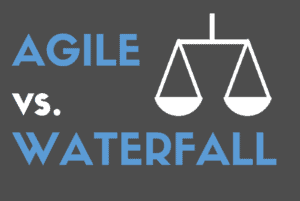Agile Vs. Waterfall
/*Agile Vs. Waterfall

How do Agile methods differ from waterfall methods? In this blog post, we will answer that question and we will present the key differences between Agile and waterfall. As the traditional method used to deliver projects, waterfall tends to be the more common and generic way of managing projects. Agile is typically used with software projects, but can also apply to other projects. Depending on the type of project, Agile may or may not be a good fit for non-software projects. With other types of projects, you might even be able to integrate Agile and waterfall methodologies together to create a dynamic way of approaching a specific project.
Let’s dive into the defining factors of both Agile and waterfall.
Key Differences Between Waterfall and Agile

Visibility, Risk, and Business Value

Scope, Time, and Cost

To see how all of these components of Agile and waterfall come together in the project, you can watch our short video clip on Agile vs. waterfall:
As you can see, there are many factors that contribute to the difference of delivery with Agile and waterfall. Depending on your organization’s culture, your team members, skillsets, and type of project, you will be able to determine which methods to follow for your specific needs – whether they be Agile or waterfall.
However, at RefineM, we believe that there are many benefits that come from using Agile to deliver projects. Some of these benefits include: reduced time to market, fast response to changes, and immediate feedback from customers. If your organization is ready for an Agile transformation, RefineM is here to help. We specialize in Agile transformation services.